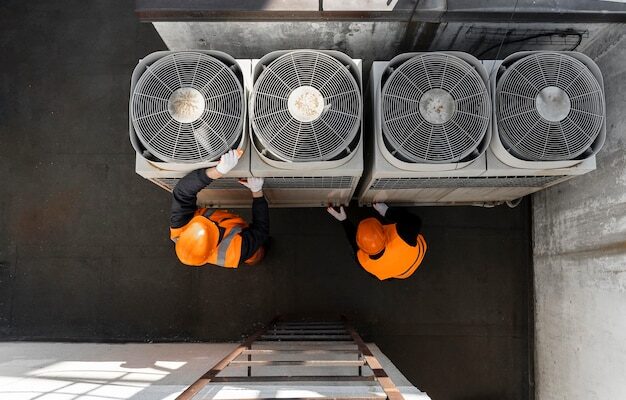The Refrigeration Insulation Materials by The Business Research Company provides market overview across 60+ geographies in the seven regions – Asia-Pacific, Western Europe, Eastern Europe, North America, South America, the Middle East, and Africa, encompassing 27 major global industries. The report presents a comprehensive analysis over a ten-year historic period (2010-2021) and extends its insights into a ten-year forecast period (2023-2033).
Learn More On The Refrigeration Insulation Materials Market:
https://www.thebusinessresearchcompany.com/report/refrigeration-insulation-materials-global-market-report
According to The Business Research Company’s Refrigeration Insulation Materials, The refrigeration insulation materials market size has grown strongly in recent years. It will grow from $4.14 billion in 2023 to $4.43 billion in 2024 at a compound annual growth rate (CAGR) of 7.0%. The growth in the historic period can be attributed to energy efficiency regulations, refrigeration industry growth, environmental regulations, consumer awareness, commercial and industrial construction, cold chain logistics..
The refrigeration insulation materials market size is expected to see strong growth in the next few years. It will grow to $5.81 billion in 2028 at a compound annual growth rate (CAGR) of 7.0%. The growth in the forecast period can be attributed to globalization of food supply chains, focus on sustainable insulation, rising demand for frozen and chilled foods, government incentives, e-commerce growth.. Major trends in the forecast period include innovations in aerogel insulation, customization and prefabrication, integration of nanotechnology, smart building technologies, technological innovations..
Increasing sales of refrigeration systems are expected to propel the growth of the refrigeration insulation materials market going forward. The demand for refrigeration systems is increasing as they are essential processes in industry and home applications and perform cooling or maintain the desired room temperature. The purpose of a refrigeration insulation system is to reduce heat flow in cooled spaces or cold devices such as refrigerated pipes, vehicles, warehouses, and HVAC, which is made possible by the use of refrigeration insulation materials. For instance, according to a report published by ANIMA Confindustria Meccanica Varia, an Italy-based industrial organization that represents companies involved in mechanical engineering, in 2021, Italy’s national production value of heating, ventilation, and air conditioning (HVAC) was approximately 825 million euros (USD 858.6 million), an increase of 11% over the previous year and 4% over 2019, while the total market in Italy exceeded 2.260 billion euros (USD 2.35 billion), an increase of 37% over 2020 and 33% over 2019. Heat pumps and air-cooled refrigeration units grew by 120 percent in volume and 130 percent in value in the size segment below 17 kW in 2021, indicating a noticeable increase in the hydronic industry. Therefore, increasing sales of refrigeration systems are driving the growth of the refrigeration insulation materials market.
Get A Free Sample Of The Report (Includes Graphs And Tables):
https://www.thebusinessresearchcompany.com/sample_request?id=9192&type=smp
The refrigeration insulation materials market covered in this report is segmented –
1) By Type: Elastomeric Foam, PU And PIR, Polystyrene Foam, Fiberglass, Phenolic Foam, Other Types
2) By Applications: Commercial, Industrial, Cryogenic, Refrigerated Transportation
3) By End-Use Industry: Food and Beverage, Chemicals and Pharmaceuticals, Oil and Gas and Petrochemicals, Other End-Use Industries
Product innovations are a key trend gaining popularity in the refrigeration insulation materials market. Major companies operating in the market are developing innovative products to sustain their position in the market. For instance, in May 2022, Honeywell International Inc., a US-based engineering and technology company launched a hydro fluoro olefin (HFO)-based refrigerant, Solstice 456A for the European automotive aftermarket. The new technology has the potential to reduce the greenhouse gas (GHG) emissions footprint of existing vehicle air conditioning systems by more than 50%. Solstice 456A is a simple, cost-effective drop-in service solution for vehicles manufactured before 2017. It contributes to meeting the needs of vehicle owners and auto repair shops in the face of ongoing EU climate-related legislation. The product line includes refrigerants for supermarkets, air conditioning for cars and trucks, blowing agents for insulation, propellants for personal and household care, and solvents for cleaning solutions, which help customers reduce greenhouse gas emissions and improve energy efficiency without sacrificing end-product performance.
Major Players:
- Armacell International GmbH
- BASF SE
- Johns Manville Corp.
- Kingspan Group PLc
- L’Isolante K-Flex S.p.A.
- Lydall Inc.
The refrigeration insulation materials market report table of contents includes:
1. Executive Summary
2. Market Characteristics
3. Market Trends And Strategies
4. Impact Of COVID-19
5. Market Size And Growth
6. Segmentation
7. Regional And Country Analysis
.
.
.
27. Competitive Landscape And Company Profiles
28. Key Mergers And Acquisitions
29. Future Outlook and Potential Analysis
Contact Us:
The Business Research Company
Europe: +44 207 1930 708
Asia: +91 88972 63534
Americas: +1 315 623 0293
Email: info@tbrc.info
Follow Us On:
LinkedIn: https://in.linkedin.com/company/the-business-research-company
Twitter: https://twitter.com/tbrc_info
Facebook: https://www.facebook.com/TheBusinessResearchCompany
YouTube: https://www.youtube.com/channel/UC24_fI0rV8cR5DxlCpgmyFQ
Blog: https://blog.tbrc.info/
Healthcare Blog: https://healthcareresearchreports.com/
Global Market Model: https://www.thebusinessresearchcompany.com/global-market-model




